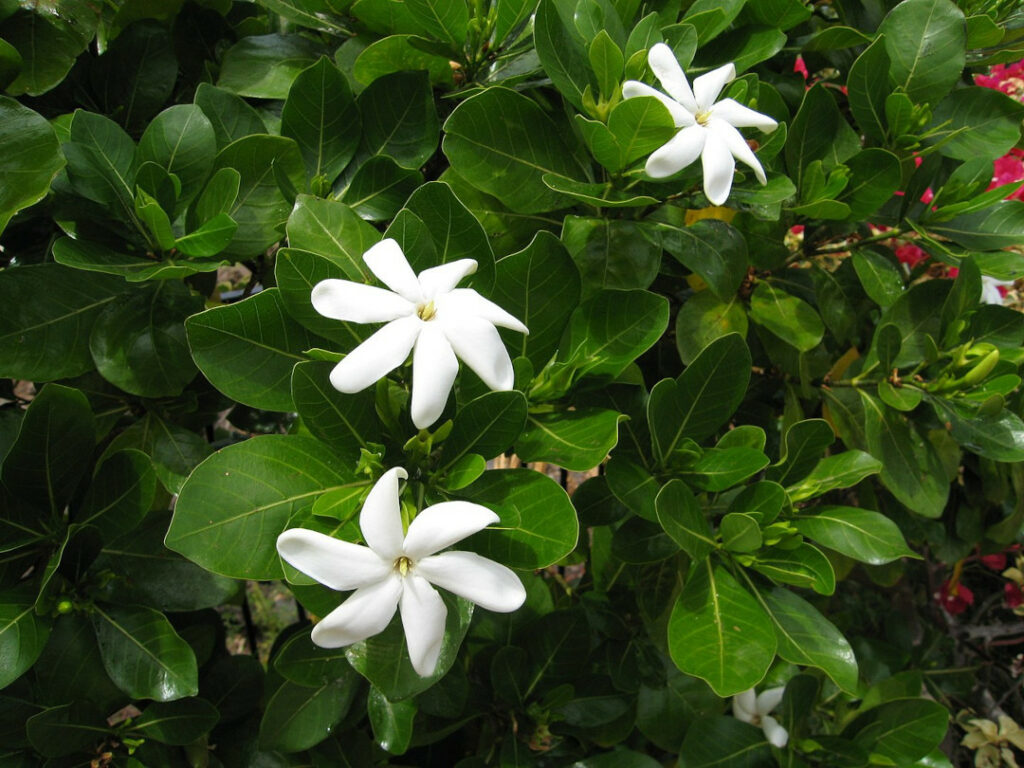
Puerto Rico
Gardenia
Gardenia taitensis

General Description/Cultural Significance
Nestled in the Caribbean Sea between the Dominican Republic and the U.S. Virgin Islands is Puerto Rico, a colorful and vibrant island with extreme diversity of vegetation and plant life. Within this one island are rainforests, deserts, beaches, and caves. The national flower is the flower of the Maga, known as the Puerto Rican hibiscus. The most easily recognizable plant is commonly thought to be the El Flambloyan tree, and the most culturally significant smell is that of the Gardenia. The specific species of Gardenia is native to Western Polynesia, but its scent has become synonymous with the tropical oasis and tranquility associated with Puerto Rico.
The Gardenia is used for medicinal purposes due to its high levels of terpenic alcohols and esters and its antiseptic properties. Traditionally, it is mixed with coconut oil and applied to the skin and scalp to treat skin issues and also used to scent massage oils. Gardenia essential oils are known to help with people suffering from digestion issues, limited libido, inflammation, fresh wounds, low breast milk production, and poor circulation. The shining dark green leaves contrasted against the bright white flowers and the unmistakable strong, sweet aroma make the Gardenia flower perfect for making traditional leis and have become an essential part of the cultural identity of Puerto Rico.
Climate Change/Conservation Status
The deadliest threat for Puerto Rico remains hurricanes, which are becoming more frequent and more destructive as a result of climate change. The country has seen the devastation that hurricanes can bring many times over. In 2017, Hurricanes Irma and Maria (both Category 5 storms) hit the country leading to over 5,000 deaths and a humanitarian crisis. The extensive destruction of infrastructure resulted in extremely reduced access to food, water, fuel, and medical help throughout Puerto Rico. The horror from storms of this magnitude does not end after the initial destruction. For months the storms left the country without electricity and resulted in a stark increase in water-borne illnesses and toxic mold. The hurricanes also destroyed countless farms in a country where agriculture has been the backbone of the economy for over 400 years. In 2022, rebuilt Puerto Rico was hot again five years after Maria. Hurricane Fiona became the worst natural disaster yet, walloping the island with historic flooding and completely destroying towns like Salinas.
As a tropical island with the majority of its infrastructure and cities located on or near the coast, Puerto Rico is particularly vulnerable to the effects of climate change. Unpredictable rainfall and temperature changes have been highly disruptive to the tropical plants and their ecosystems throughout Puerto Rico. In addition, these rising temperatures are causing mosquitoes to reproduce at greater rates, increasing the prevalence of mosquito-borne illnesses. Rising ocean temperatures have a similar impact on increasing the presence of bacteria and algae, also causing diseases for both humans and aquatic life. In addition to these increases in temperature causing detrimental effects. In some areas droughts have become a continuous issue for Puerto Rico. This may lead to insufficient water supply for the survival of plants such as the Gardenia. Water supply has already been a tough issue for Puerto Rico resulting in rationing of water for thousands of people.
The tropical plants of Puerto Rico, including the Gardenia, survive best in places with consistent temperatures all year. As a result, variations in temperature can be intolerable to these plants and also to many tropical animals as well. For example, coqui frogs, bromeliads, mosses, and lichens are being strained by the changing temperatures hitting the island. In addition, freshwater ecosystems within Puerto Rico are vulnerable to rising temperatures which cause the water to hold less dissolved oxygen, making it more difficult for the fish and other aquatic animals to survive. The warming and unpredictable weather conditions are making climate change a stark and dangerous reality for Puerto Rico and the scents which are so tied to its culture and traditions.
Sources
Conservatory Of Flowers. 2022. Gardenia taitensis – Conservatory Of Flowers. [online]
Environmental Protection Agency, 2016. What Climate Change Means for Puerto Rico. Environmental Protection Agency.
Oils, E., 2022. 9 Benefits of Gardenia Essential Oil | Organic Facts. [online] Organic Facts.

